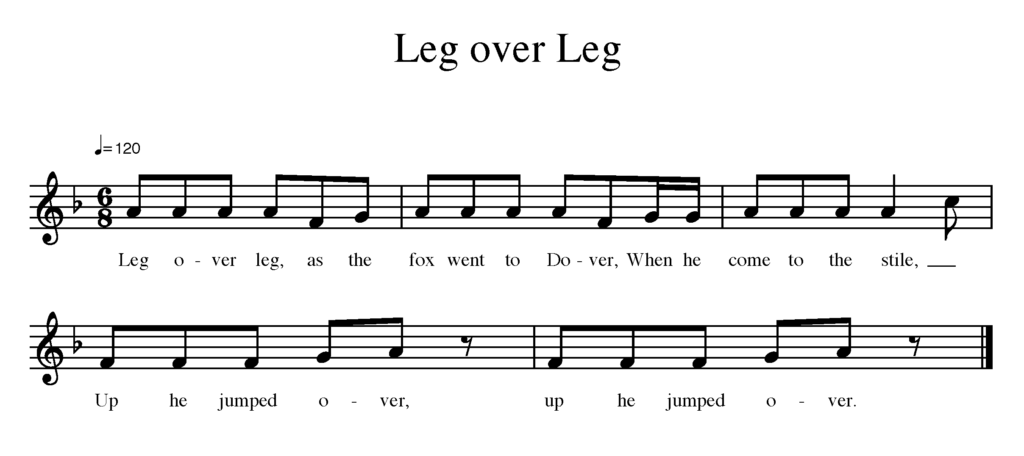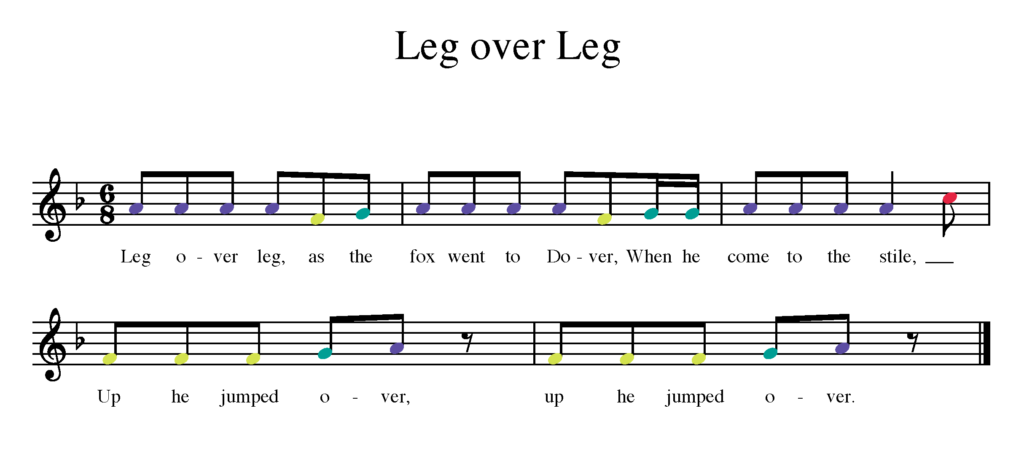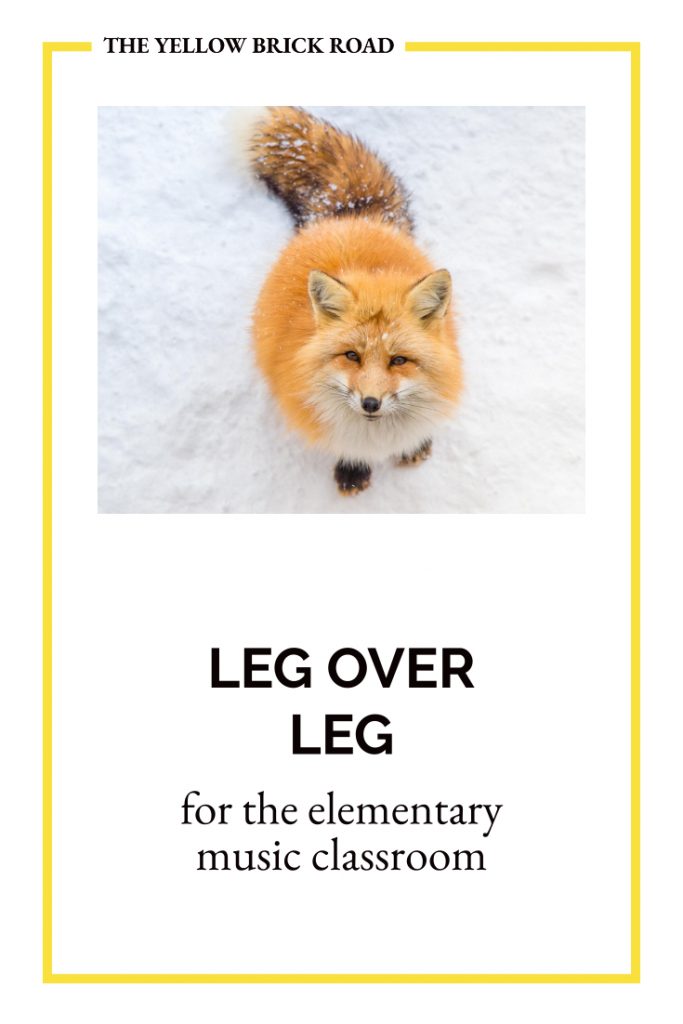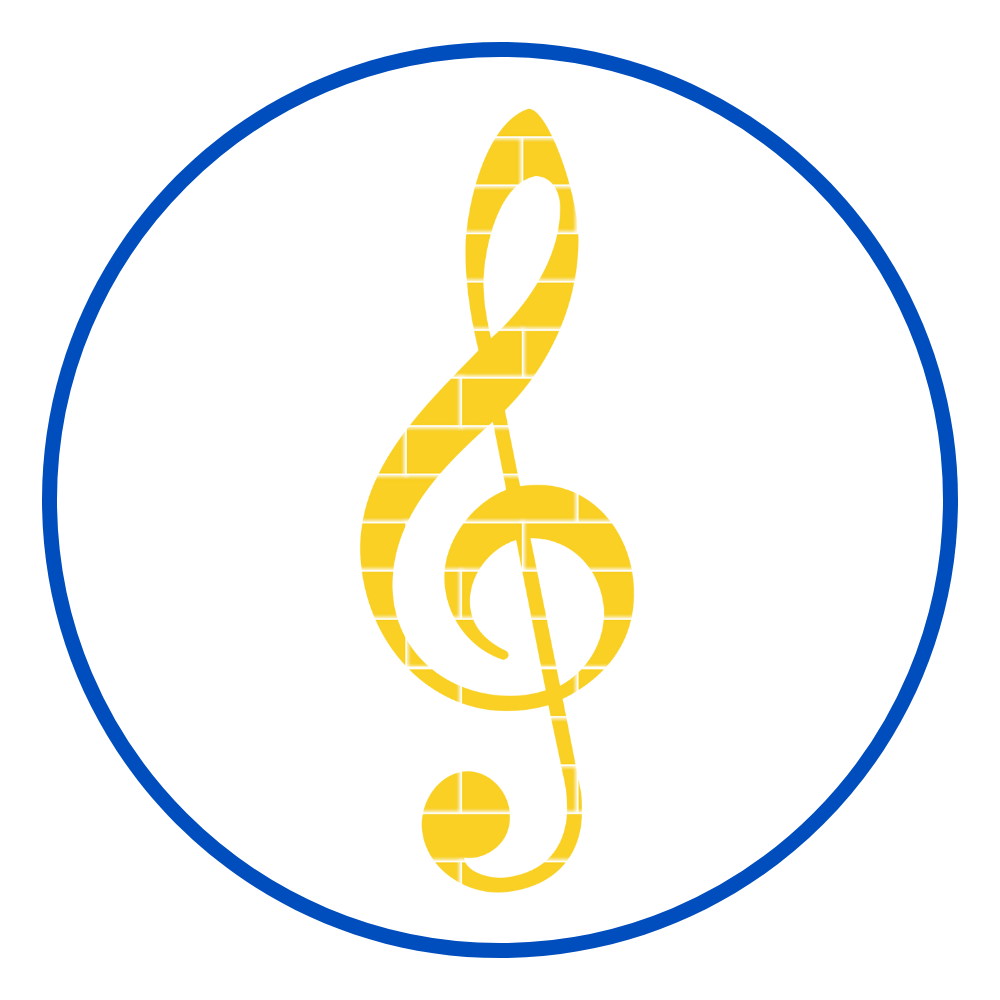If you follow me on Facebook, then you know that I’ve been fox-obsessed lately. We’ve been lucky enough to have a family of foxes (mom and four kits) living in the small, wooded area behind our apartment in town. You can watch a video of them pouncing and playing here. If you’d rather watch them cuddling and napping, you can see that here.
In celebration of our newfound entertainment, I’ve decided to feature a song about foxes. It’s called Leg over Leg, and would be fantastic for your younger students.

I don’t know of any specific game that goes with this song (aside from the one meant for babies here). So, I decided to make up my own!
CIRCLE GAME
To play this game, you’ll need enough props for each student. You could use small beanbags, stuffed animals, bells, or even shoes. It just needs to be something the students can grasp easily and won’t roll away.
Students sit in a circle with their legs out in front of them and one prop between each student.
- Leg over leg, as the fox went to Dover
- Students cross their left leg over their right, then cross their right leg over their left
- When he come to the stile,
- Students place their hands on the prop
- Up he jumped over,
- Students move the prop from their right to their left side
- Up he jumped over,
- Students move the new prop from their right to their left side
The idea is that the prop will “jump over” to the other side each time they sing “up he jumped over”.
DO, RE, AND MI & TRIPLE METER
Feierabend and Fans will appreciate having this in their collection of do, re, mi songs in triple meter. It’s unique in that it begins and ends with mi. Your older students could also use this to practice their fingerings on recorder, practice on Orff instruments, or play on Boomwhackers™.
I’ve included the colored notation for instruments below. Please keep in mind that colored notation isn’t just for colored instruments, but is also a fantastic tool for students learning to read music. I’ve said it before, but I’ll say it again. I taught myself to play on my grandmother’s piano via a book that used colored notation, and I’m not sure I would’ve been able to do the same with standard notation.


